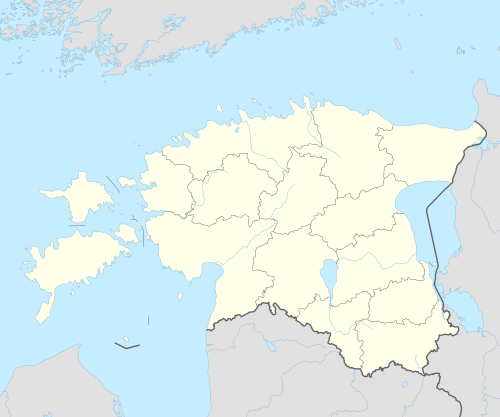Sindi, Estonia
Sindi (German: Zintenhof) is a town in Tori Parish, in Pärnu County, Estonia, with a population of 3906 in 2017. It is located 14 kilometers from the county capital Pärnu, on the left coast of the Pärnu River.
Sindi Sindi | |
|---|---|
.jpg) | |
 Flag  Coat of arms | |
 Sindi Location in Estonia | |
| Coordinates: 58°24′2″N 24°40′3″E | |
| Country | |
| County | |
| Government | |
| Population (2017) | |
| • Total | 3,906 |
| • Rank | 32nd |
| Ethnicity | |
| • Estonians | 81.1% |
| • Russians | 14.8% |
| • other | 4.1% |
| Time zone | UTC+2 (EET) |
| • Summer (DST) | UTC+3 (EEST) |
History
In the area of Sindi was the Mesolithic settlement of Pulli, dating from around 8500 BC - the oldest known settlement in Estonia. It was discovered by geologists in 1965. The settlement probably existed for a short period, as the area was later covered by water. As a swampy region, the area remained unpopulated until the 16th century.
The town's name is derived from Clauss Zindt, a mayor of Pärnu in 1565, who founded a manor (Zintenhof) where the town is now. The settlement was formed in 1833 around a textile factory owned by the manor. It officially became a borough in 1921 and a town in 1938.
Important to the town's development was the founding of a railway station 1928. The railway operated until 1970.
Geography
Sindi is located on the left bank of Pärnu River, between the river and the wetland of Lanksaare.
Notable people
- Uno Palu (born 1933), decathlete
- Allar Raja (born 1983), rower
- Julius Seljamaa (1883–1936), politician and diplomat
- The Tuberkuloited, rock band originally from Sindi
Gallery
 Railway station building
Railway station building- Town hall of Sindi
- Historical Sindi schoolhouse
- Sindi Russian Orthodox church
 Residential building
Residential building Sindi dam
Sindi dam
External links
- Official website (in Estonian)